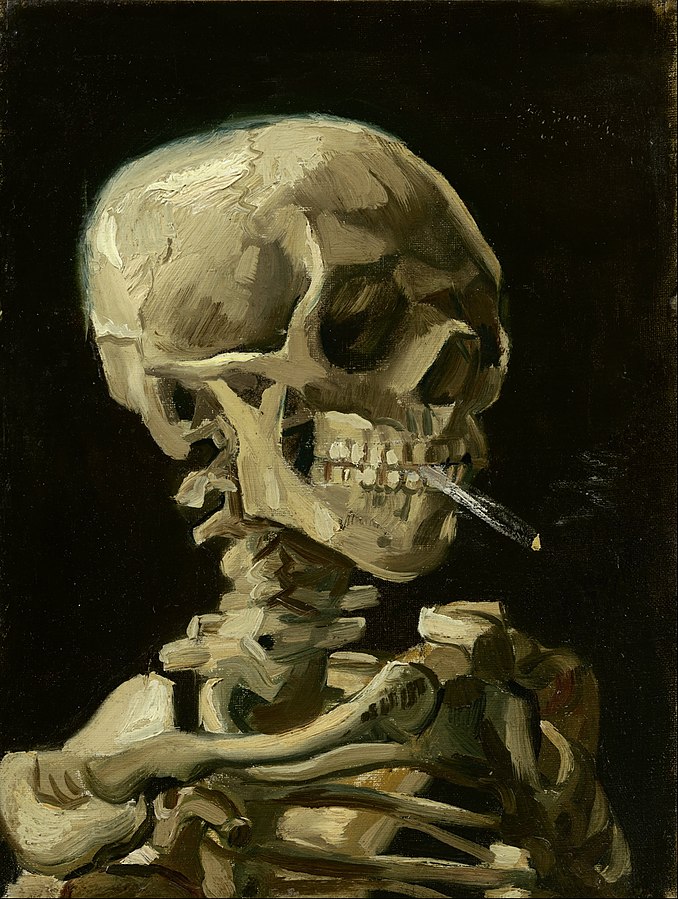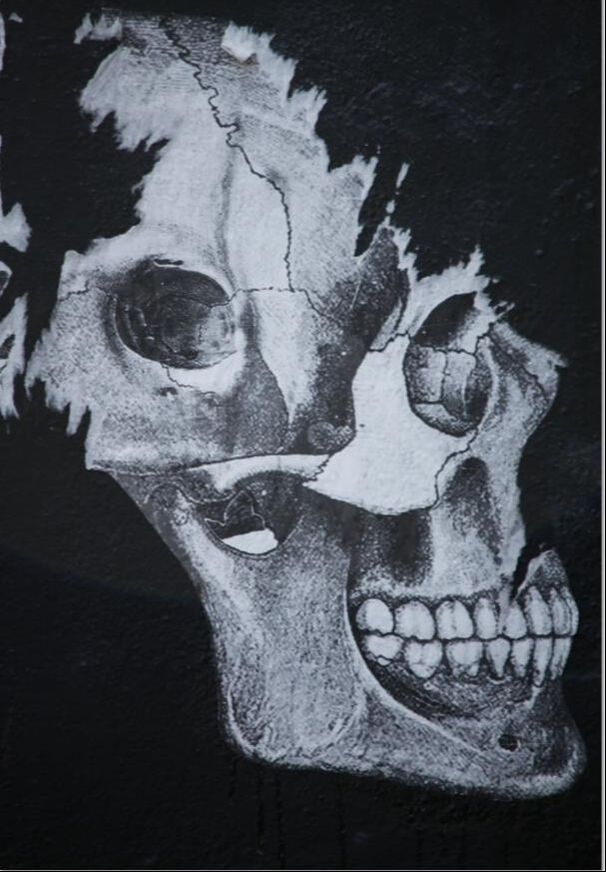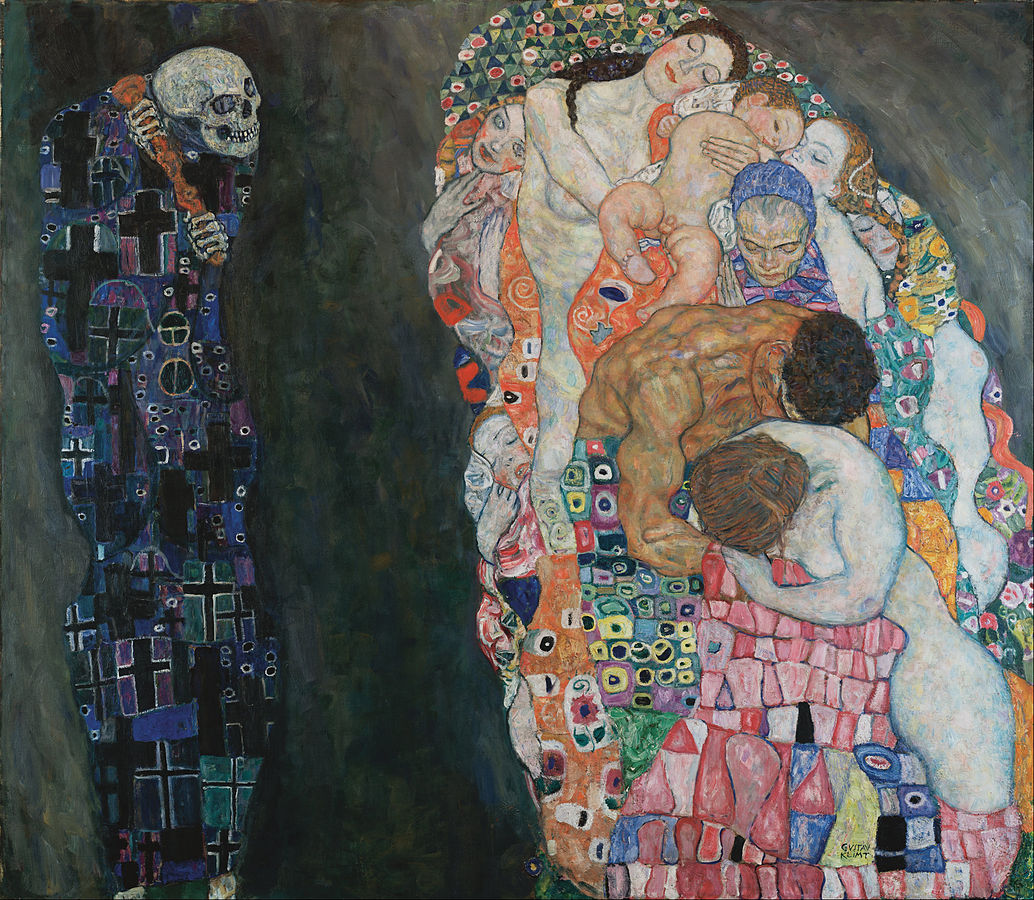|
With loss there is a need to heal. Art can help us put things into perspective. It helps us answer questions such as:
The term Memento Mori (Latin for "remember that you will die") is a common theme found in art throughout the ages. Although the term is rooted in Christianity, it is later found in art beyond churches and graveyards. In Europe, the popular artistic genre known as vanitas (Latin for "emptiness" or "vanity") emerged around the 16th or 17th centuries. You can spot this genre in paintings that contain typical objects such as skulls, dwindling candles, and timepieces. Art from the 18th-20th centuries continues to use symbolism to illustrate how life carries on after death. Painters such as Klimt and Millais combine eerie with beautiful, decorative elements. Their paintings are dually unsettling, yet peaceful. Let's further explore how artists grapple with death within their art. Memento Mori by Frans van EverbroeckVan Everbroeck painted Memento Mori between 1654 and 1672. He's known for his still-life paintings that depict life on earth as transient. This typical vanita composition uses symbolism (a book, skull, soap bubbles, fizzled candle, hour-glass, and a watch) to illustrate mankind’s meaningless quest for earthly goods and higher aspirations. The paper in the painting states: “Me Ment Mor” It acts as a reminder that your worldly goods remain behind once you leave this earth ("remember you will die"). Ophelia by John Everett MillaisIn the 1851-52 painting titled Ophelia, Millais depicts the character from Shakespeare’s Hamlet. In this painting we see Ophelia floating in a river just before she drowns. Ophelia’s character suffered from intense grief. We see her with wildflower garlands, unaware of her danger. Her clothes balloon with air and help keep her temporarily afloat. Eventually, to quote Shakespeare: Till that her garments, heavy with their drink, This painting, although sad, is also beautiful with the way John Everett Millais depicts the flowers and river bed. The red poppy represents sleep and death. Although her character suffered emotional pain, she had a peaceful death. In Haight Ashbury in San Francisco, there is a more modern day mural reminiscent of Ophelia in its composition: Skull of a Skeleton with Burning Cigarette by Vincent van GoghSkull of a Skeleton is one of Vincent Van Gogh’s earlier works, painted around 1885–86. Here he mocks the use of skeletons in art classes. They were commonly used to teach anatomical structure and body proportions. The jammed cigarette into the teeth of a lifeless skeleton uses macabre humor to bring an otherwise dead object to life. Some critics claim that this painting is a self-portrait of sorts, as Van Gogh never thought highly of his looks. Like many places around the world, Santa Fe and San Francisco have many skull head murals about town that commemorate lives lost: Death and Life by Gustav KlimtIn the 1910-15 painting, Death and Life, Klimt depicts death in an Art Nouveau (Modern) style. It’s an eerie painting divided into two sections. The left side of the canvas is the menacing Grim Reaper. Death visits people of all ranks in society. The right side of the canvas represents life through the images of women intertwined with nature. Klimt often used women within his paintings to symbolize life. The circular pattern symbolizes the continuation of life, and gives a note of hope. The human figures on the right do not appear threatened by the figure of death. They disregard it, as though they know that death is not something to fear. Those that remain behind will continue to thrive. Life after death: How to heal and move forward“Grief turns out to be a place none of us know until we reach it.” To artistically capture the essence of someone's life or death is difficult — even for the best of artists. A person's final belongings may seem mundane to the unknowing, but they hold memories, secrets, and stories about who that person was. They are totems that represent a person's accomplishments, and are remnants of their life's failures. Their belongings represent how they wished the world to see them as a person. Through art we can keep those stories, and memories alive — the art form doesn't matter. We can strip away façades to create art that truly represents a person's soul. The process of art-making can help you grapple with the deep sense of loss, and move forward to find peace. It can help fill the void. Your art can be the voice for the person who can no longer speak. May you all be at peace through your art making. If you liked this blog post, you may also like: Comments are closed.
|
Categories
All
|
Privacy policy
Copyright 2024 Patricia Pinsk








